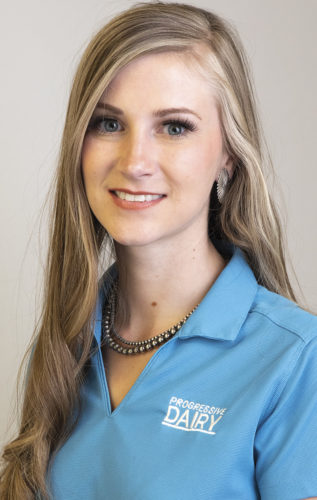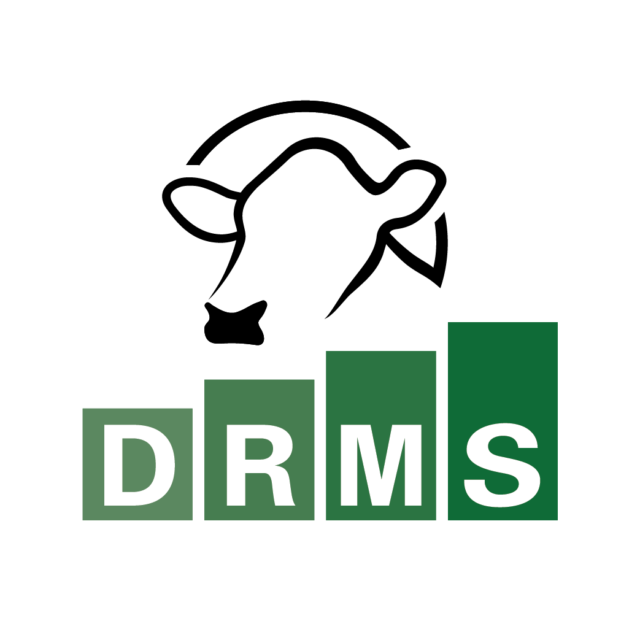Animal monitoring technologies bring long-term benefits and cost savings to five-plus-year users.
Owner: Matt Worden
Farm name: Will-O-Crest Farms LP
Location: Clifton Springs, New York
# of milking cows: 2,000 cows
Animal monitoring systems currently in place and year it was installed: Activity only collar system installed in 2010 and then upgraded to activity and rumination in 2014. We installed an Allflex (SCR) sort gate in 2015. Added a second farm with full Allflex (SCR) collars in 2016.
Owner: Dan Reuter
Farm name: Reuter Dairy, Inc.
Location: Peosta, Iowa
# of milking cows: 850 cows
Animal monitoring systems currently in place and year it was installed: Allflex animal monitoring system and rumination collars installed in 2014.
Dairy manager: Brian Waymire
Farm name: Tony Degroot Dairies
Location: Hanford, California
# of milking cows: 4,500 cows
Animal monitoring systems currently in place and year it was installed: Allflex animal monitoring system and rumination collars. The system was installed in June 2014.
What data or reports does your monitoring system provide for your herd?
Worden: The system provides two major health reports for us. The first one being the whole herd health report. This report shows us any animals that have dropped in rumination in all pens. The second is the fresh cow health report, providing a more detailed look at any cows under 60 days in milk which may be having health issues. The system also provides heat detection reports for both milking and youngstock groups.
Reuter: The big one is the rumination. The other main report would be our fresh cow report. It breaks down all cows fresh under 30 days. As far as the milk weights report, I use it on all the cows. It breaks down what age the cow is and where they are milking. I also use the activity report for heat detection.
Waymire: The collars track daily rumination and activity on each individual cow. From that we track her health during the transition period. We run a daily report on rumination on cows under 40 days in milk (DIM). We also run a report that goes onto our pocket cow cards to find sick cows and cows to breed in A.I. pens. I watch herd rumination on a weekly basis and for the immediate seven days following a ration change, by pen.
What role does your monitoring system play in transition cow management?
Worden: Our fresh cow report is crucial to our fresh cow management and is the only method we use for detecting fresh cow health issues. With a quick check of the rumination report we can determine what fresh cows need to be separated and given physical exams. Three years ago we would lock cows and walk fresh pens daily, trying to visually determine which cows have been up eating or chewing their cud and at best only getting a 45-minute snapshot to count for the entire day. With the rumination monitoring we have a 24/7 visual of what cows have been doing and how they are feeling.
Reuter: I use it on a daily basis, probably twice a day, to watch the rumination changes in the fresh cows. I can check fresh cows in the morning in five or 10 minutes and then go work on only the ones that need help versus being in the barns for five hours. It has eliminated my having to lock cows up and go out to examine cows. I mainly watch for the ones that decrease in rumination. No matter what the amount is, as long as it is increasing, I don’t have to go check on her. I leave her alone and check her 12 hours later on the computer. When I do need to treat fresh cows, with the system I know how to treat them and know after I treat them how they respond in rumination. So if they don’t respond I know they probably need to be moved out. If the cow responds quickly, then this is something she will probably come out of. Because of the system I am treating cows a lot less.
Waymire: We run a daily report based on rumination. Cows that are below a certain level are then evaluated by our fresh cow team. Fresh cows must have a certain rumination level to then leave the hospital after the withdrawal period is over. We reduced the amount of time we lock up to half and reduced the amount of fresh cow treatments by two-thirds. By using the collar system, we were also able to eliminate taking temperatures in the first 10 days post-partum.
How has the monitoring system transformed your management decisions in the last 5 years?
Worden: We have moved away from walking pens. The sort gate allows us to pull the animals which are flagged on the lists to greatly reduce the time in which cows are locked up. Our goal is to be able to monitor the cows from outside the pen so we can leave them be to just be cows. We were able to start a 650-cow satellite farm without adding any herdsmen. We can monitor all of the cows from the main farm.
Reuter: I feel a lot more profitable. I am not spending money where I used to because of the uncertainty. And when I do spend money to treat a cow, I feel more confident having the information and knowing how she is doing internally. I’d also say having actual milk weights three times a day makes me feel a little more efficient as far as what cows need to stay and which cows we need to move out. I have eliminated locking cows up and only going to the cows that need attention. This has saved me several hours of time in my day and also given me a lot of freedom from the barn. I love working with cows, but when you need to be efficient in the dairy business you can’t spend that much time in the barn. I have other jobs that need to get done and this allows me to do it.
Waymire: There are so many things I would like to report on during my experience with this system over the last five years. But the main transformation that I can share with you is that this system made us reevaluate how we were going about managing our cows. It made us ask ourselves questions like: is it necessary to and good for the cows to be taking their temperature every day for the first 10 days post-partum? Was this helping the whole herd? Secondly, does every cow need double Ovsynch to come into heat? Also, do I really need to get every cow pregnant at 90 DIM? I have had cows that are still giving 70 pounds of energy-corrected milk (ECM) at 800 DIM. So this led me to think that maybe we don’t need every cow pregnant by 90 DIM – some cows are still profitable even if they take a little longer to get pregnant (or not pregnant). I’m always excited to use this system to help answer questions that will affect the management of the dairy to make the operation as efficient, and in turn as profitable, as possible.
What long-term benefits has the animal monitoring system had on your farm?
Worden: The labor savings is by far the largest impact the system has had on our farm. Moving away from walking pens for heat detection and health monitoring and just focusing on the animals that we need. To be able to show up in the morning and within a half hour know all the cows which will need to be bred or checked for health issues across all of the lactating strings without putting a foot in a single pen.
Reuter: It is several little things that add up to a lot of money which our farm profits from. Labor saving in particular has been huge. It allows me to make more decisions I think on an individual basis instead of relying on other people to examine cows. If we have one cow to examine, I can go right to her and not lock the whole group of cows up. Overall, it has made the farm more efficient in all the aspects, whether it be not treating a cow that is doing very well on rumination or finding a sick cow sooner. Also, having accurate information about a cow’s production level and knowing whether or not to keep her in the herd has definitely saved me money. On the activity-monitoring side, I don’t do much Ovsynch anymore. We believe 100% in the system to identify all the heats. So we have eliminated most all of our shots.
Waymire: Some of the long-term benefits have been cutting the fresh cow treatment by 66% of what we were spending before. We also cut our hormone usage by 75%. We feel like it is only a matter of time before our consumer base hears about how much hormones are being used to get cows pregnant and just like BST, hormones will become a thing of the past. We now are selecting internally for genetics that are fertile and do not need hormones to get pregnant. We are able to use rumination to conduct feed trials for different additives which we do not have in the current total mixed ration (TMR). The data delivers and tells us if the particular additive is working or benefiting. In the ability of watching rumination, I have been able to prevent many crashes that we might have not found and could have led to a nutrition disaster.
What advice do you have for dairy producers exploring the technology?
Worden: Visit and talk with other producers already using the technology. Some of the best ways I use the technology now are ideas I received from other farms which were also using the system. These systems are very customizable to individual operations.
Reuter: There are so many things it does which helps us here and there. I couldn’t imagine not having it. After using it, trusting it and relying on it, the system is as important to me as my milker pump.
Waymire: I would say dairy producers who would like to explore this type of technology should go into it being openminded and ready and willing to explore new things and new ways to manage their dairy operation. For us, like I said, it was things such as going away from double Ovsynch when the majority of producers are on a double Ovsynch program. I am not as worried about my pregnancy rate. I now look at the big picture and focus on cost per pregnancy. As an industry, I think we have gone too far from “how can we make more with less?” and more in a direction of “More is more.” I think at some point all producers are going to have to reevaluate their practices and what steps they take to get their cows pregnant. ![]()

-
Audrey Schmitz
- Editor
- Progressive Dairy
- Email Audrey Schmitz





